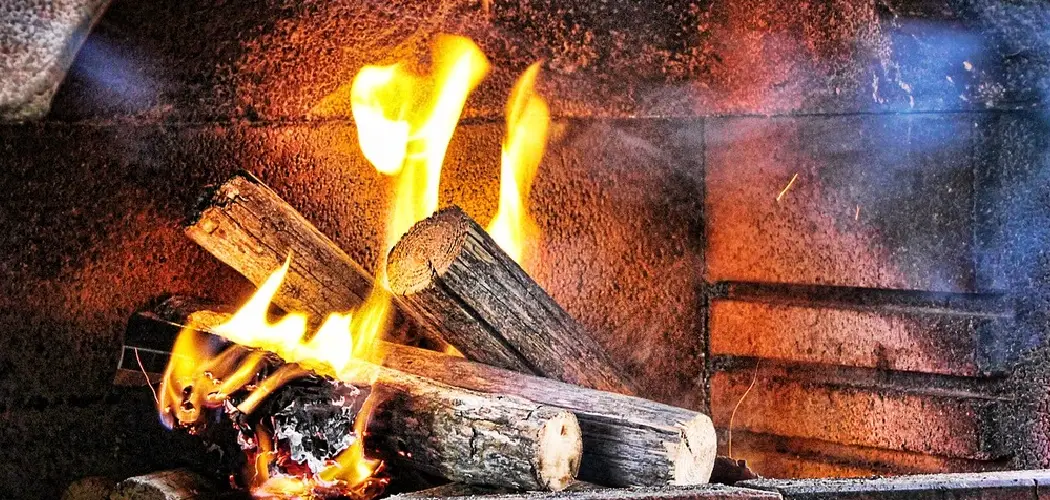Heating your garage is essential in colder climates, where low temperatures can make the space uncomfortable or unusable for extended periods. A heated garage protects tools, vehicles, and other equipment from the effects of freezing weather and allows the area to function as a productive workspace year-round.
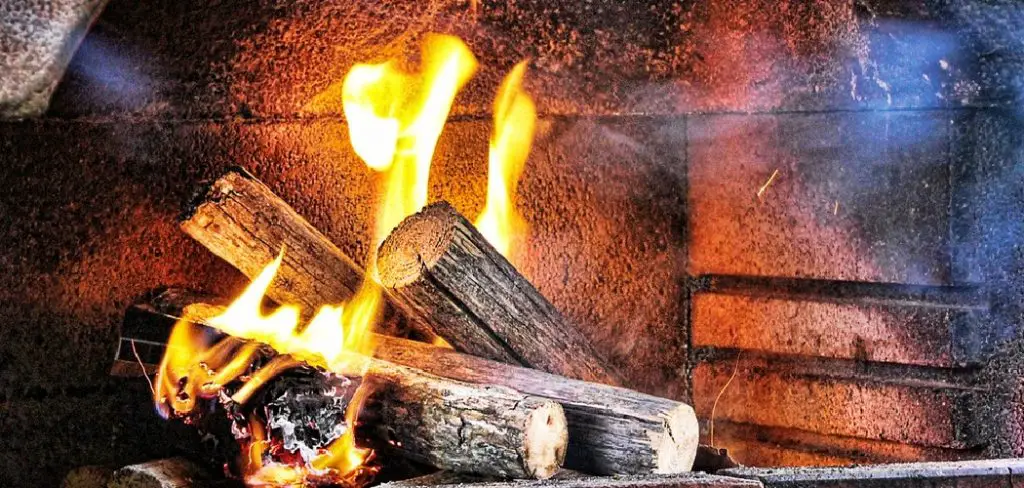
Wood stoves stand out as a cost-effective and reliable choice among the many heating options available. They deliver consistent warmth, reduce electricity dependency, and even provide a rustic charm to your garage.
This article serves as a comprehensive guide on how to put a wood stove in a garage safely and effectively. It covers everything from understanding legal requirements to addressing structural and safety considerations. Following the outlined steps will ensure a safe and efficient installation, making your garage a warm and functional space even in the coldest months.
Check Local Codes and Permit Requirements
Building and Fire Codes
Before installing a wood stove in your garage, it’s essential to consult your local building and fire codes.
These regulations are designed to ensure your safety and typically address aspects such as the placement of the flue, the required clearances between the stove and combustible materials, and certifications for the stove model you plan to use. Adhering to these codes is a legal obligation and a way to ensure that your garage remains a safe environment for you and your household.
Permit Process
Many localities require you to obtain a permit before installing a wood stove. Contact your local permitting office or visit their website to understand the application process and associated fees. Additionally, your installation may need to pass inspections at various stages—both before and after the stove is installed. These inspections ensure compliance with building and safety standards, giving you peace of mind that the installation is up to code.
Insurance Considerations
Finally, notify your insurance provider about your intent to install a wood stove in your garage. This is a crucial step, as some policies may not automatically cover wood stoves or could require adjustments to your coverage. By alerting your insurer, you reduce the risk of denied claims in the event of an incident.
How to Put a Wood Stove in a Garage: Choosing the Right Wood Stove
When selecting a wood stove for your garage, carefully considering various factors is essential to ensure effective and safe heating. Choosing the right size, energy efficiency, and features will help you achieve optimal performance while considering environmental and safety concerns.
Stove Size and Heat Output
Matching the stove’s heat output to the size of your garage is crucial for efficient heating. Heat output is typically measured in BTUs (British Thermal Units), and selecting a stove with the appropriate capacity ensures that your space will be adequately warmed without wasting energy.
An undersized stove may struggle to heat the area, while an oversized one can lead to overheating and inefficiency.
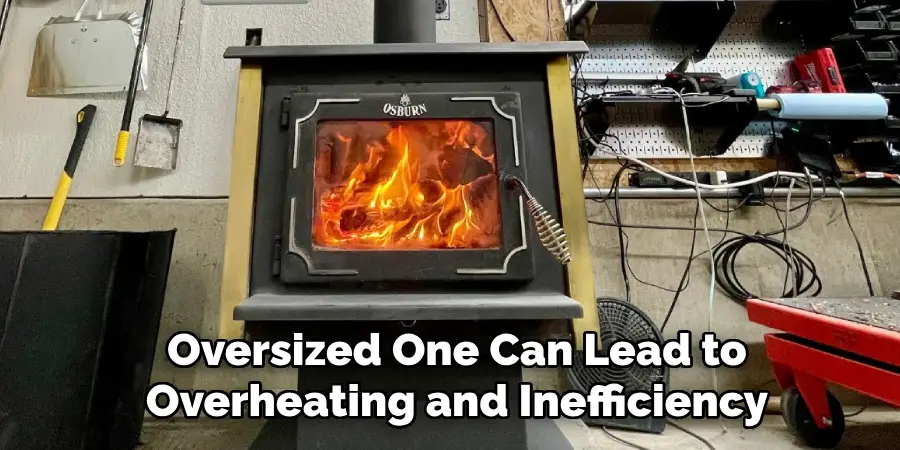
EPA-Certified Models
Opt for an EPA-certified wood stove to ensure you choose an environmentally friendly and efficient model. These stoves are designed to burn wood more cleanly, reducing harmful emissions and maximizing the energy extracted from the fuel.
Fuel Type
Stick to seasoned hardwood, such as oak, maple, or birch, for cleaner burning and reduced creosote buildup. Avoid using green or wet wood, as it burns less efficiently and produces more smoke and soot.
Additional Features
Consider stoves equipped with additional features like built-in fans or thermostatic controls. These can provide better heat regulation, improved airflow, and increased convenience, allowing you to maintain a comfortable temperature easily.
Preparing the Garage Space
Floor Protection
To protect your garage floor from heat damage, it is essential to use a fire-resistant hearth pad or a tile base under your wood-burning stove. These materials act as a barrier, ensuring that the high temperatures produced by the stove do not compromise the floor’s integrity. Proper flooring also keeps stray embers from causing accidents.
Clearance Around Stove
Maintaining adequate clearance around the stove is crucial for both safety and efficiency.
Follow the manufacturer’s specifications to ensure the stove is kept safe from walls, furniture, and combustible materials. This precaution reduces the risk of accidental fires and allows for proper heat circulation.
Ventilation
Proper ventilation is vital when installing a wood-burning stove in your garage. Ensure there is sufficient airflow to prevent smoke buildup, which can lead to respiratory issues or dangerous conditions. Good ventilation also helps maintain oxygen levels in the space, supporting an efficient combustion process.
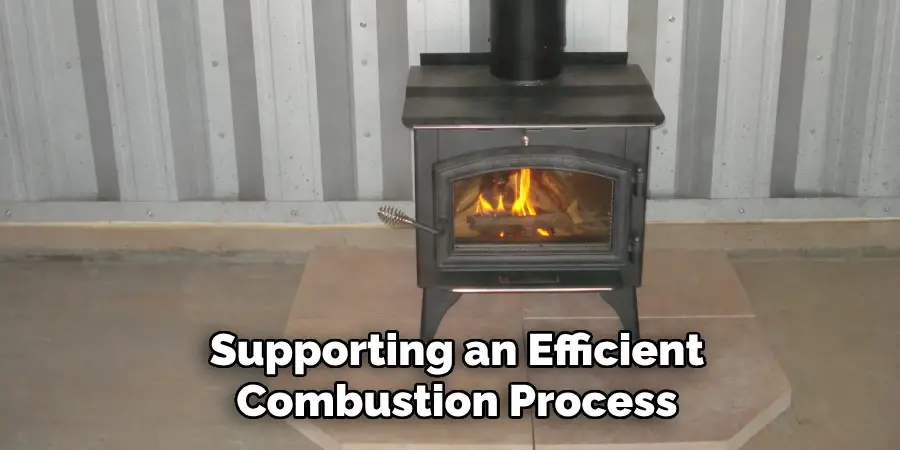
Wall Protection (Optional)
If your wood-burning stove is positioned near walls, consider installing fire-resistant wall panels to provide extra protection. These panels shield surfaces from excessive heat and reduce the risk of fire hazards, ensuring a safer woodworking or utility environment in your garage.
Installing the Chimney and Flue Pipe
Selecting the Right Chimney Type
When installing a wood-burning stove, using the correct chimney type is essential for safety and efficiency. A Class A insulated chimney pipe is designed for high-heat appliances like wood stoves. These pipes, made with double- or triple-wall construction, provide safe heat containment and reduce the risk of accidental fires. Ensuring your chimney system adheres to these specifications is crucial for long-term safety and performance.
Chimney Route Options
Planning the chimney route is a key step in the installation process. The most efficient route is a vertical installation that runs straight through the roof of your garage. This setup minimizes bends, ensuring smoother draft flow and reducing creosote buildup. However, a horizontal route through the wall is also an option, provided it includes a vertical chimney stack outside to facilitate proper draft and exhaust. When planning horizontal sections, keep them limited to a quarter of the overall chimney length to avoid blockages or draft inefficiency.
Installation Steps
- Begin by carefully measuring and cutting an opening for the chimney pipe in your garage roof or wall, ensuring it aligns with your planned route.
- Install mounting brackets to secure the pipe and attach flashing to create a watertight seal at the roof or wall penetration.
- Seal all joints and connections with high-temperature silicone or similar materials to prevent leaks and heat escape.
- Once fully connected, inspect the system for proper alignment and stability before use.
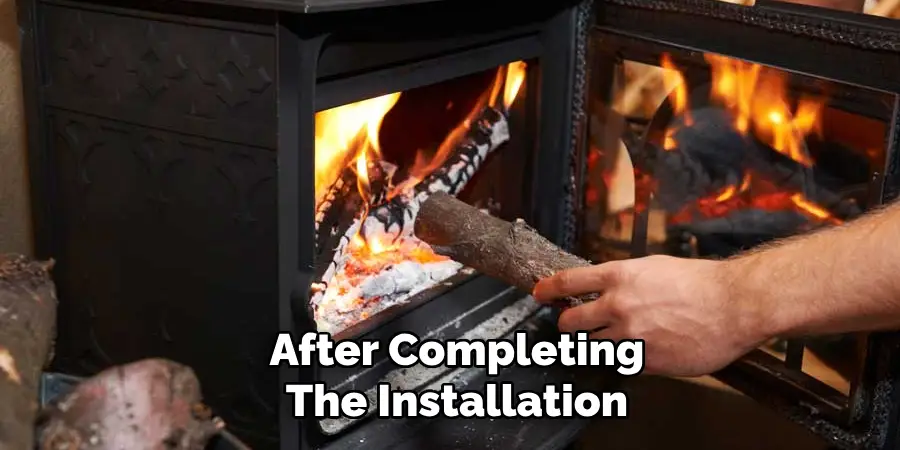
Check Draft Flow
After completing the installation, test the chimney to confirm it creates a strong draft, pulling smoke efficiently upward and out. A properly functioning draft is vital for avoiding smoke buildup and ensuring the safe operation of your wood-burning stove. Always perform a final inspection to ensure all components meet building codes and manufacturer specifications.
Safety Tips and Final Checks
Install Carbon Monoxide and Smoke Detectors
Proper safety precautions are critical when using a wood-burning stove in your garage. Install carbon monoxide and smoke detectors near the stove and in other key locations throughout the garage to ensure early detection of any dangerous emissions or fire outbreaks. Regularly test these devices to confirm they are in working order.
Fire Extinguisher Accessibility
Keep a multi-purpose fire extinguisher within easy reach of your wood-burning stove. Make sure all household members know its location and understand how to use it in case of an emergency.
Wood Storage Safety
Store firewood at a safe distance from your stove to minimize the risk of accidental fires. Maintain a clear area around the stove, free from combustible items such as papers, fabrics, or chemicals.
Regular Maintenance
Cleaning your chimney and stove periodically is essential to prevent creosote buildup, which can lead to dangerous chimney fires. Schedule annual inspections to maintain the efficiency and safety of your system.
Test Burn
Before operating your wood-burning stove regularly, conduct a small test burn. Monitor the process carefully to ensure a proper draft and confirm the smoke escapes through the chimney as intended. Adjust as necessary to achieve optimal performance and safety.
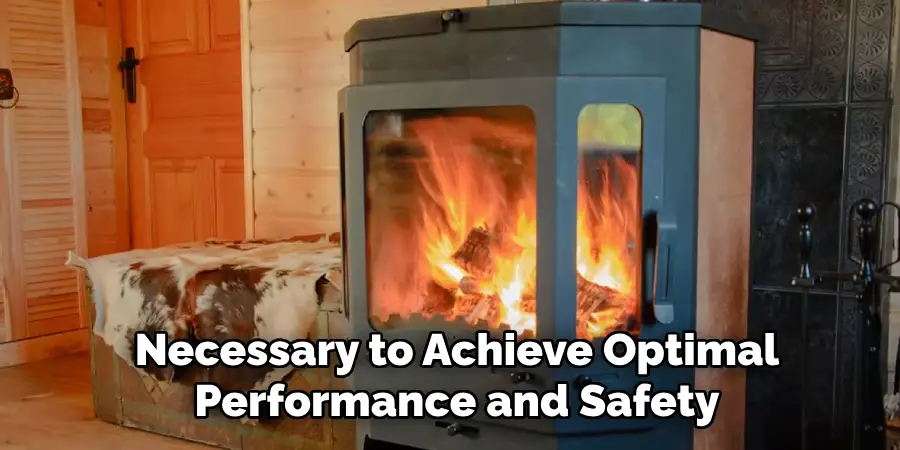
Conclusion
Learning how to put a wood stove in a garage involves several crucial steps to ensure both effectiveness and safety. Begin by checking local building codes to comply with regulations, then choose a suitable stove that matches your garage’s requirements. Prepare the space by ensuring proper clearance and installing non-combustible materials where needed.
During installation, prioritize safety features like proper ventilation, smoke and carbon monoxide detectors, and regular maintenance to prevent hazards. Lastly, always follow the manufacturer’s instructions carefully and seek professional assistance if you’re uncertain about any part of the process. Following these guidelines will ensure a safe and efficient wood stove setup.
I am Rick. I grew up helping my dad with his handyman service. I learned a lot from him about how to fix things, and also about how to work hard and take care of business. These days, I’m still into fixing things- only now, I’m doing it for a living.
I’m always looking for new ways to help people grow and develop. That’s why I have created this blog to share all my experience and knowledge so
that I can help people who are interested in DIY repair.

